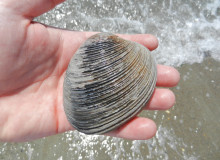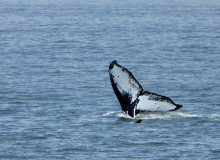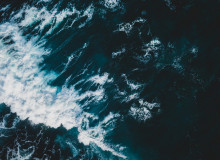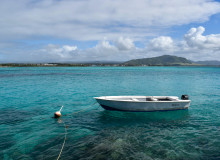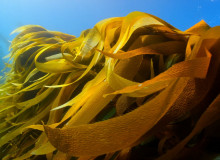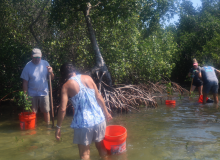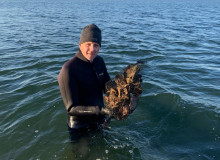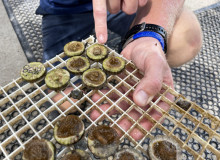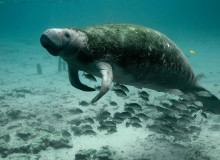Water
University of Florida
Meet clammers, scientists and volunteers, like TV star Blair Wiggins and three generations of women, who are returning clams to Florida's Indian River Lagoon and other ailing waters to reduce pollution.
Planet Forward Correspondent | Ithaca College
HappyWhale, a website created in 2015, uses a unique algorithm to identify and track humpback whales. It relies on photographs from ordinary people to further scientific research.
Georgetown University
Traditional Indigenous mariculture practices are easier on the environment and sustainably produce delicious seafood.
University of Connecticut
This July marks two years since the MV Wakashio oil spill. Though environmental NGOs have left the island and news coverage of the disaster has ceased, youth around Mauritius are still reeling from the effects of the tragedy.
Georgetown University
How making kelp commonplace in our diets and adapting harvested biomass into various materials will help both humans and the planet.
Northwestern University
Volunteers helping in recovery at Benedict Key aim to build up an oyster reef to shield the fledgling mangroves from destructive waves, Sarah Anderson reports.
Northwestern University
Excessive algae growth wreaked havoc on southwest Florida’s ecosystems, Sarah Anderson reports. A team of scientists is analyzing water samples to figure out what’s driving the blooms –– and how to mitigate them.
Georgetown University
Through regenerative aquaculture, Michael Doall is using the ecosystem services of oysters and kelp to clean up our oceans and our plates.
Northwestern University
ONDA Design is working to counteract coral disease and bleaching by developing technology for coral restoration and rehabilitation, Catherine Odom reports.
Planet Forward Correspondent | George Washington University
The manatee population on Florida’s East coast has suffered from an “unusual mortality event” since December 2020. Wildlife officials and conservation groups have responded to the crisis with emergency policy innovations and lawsuits respectively.

